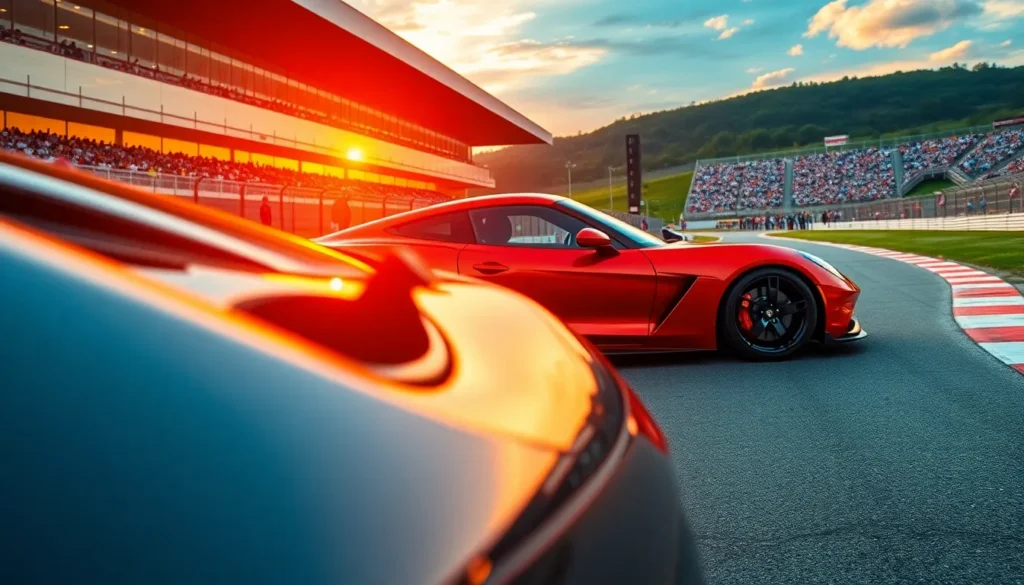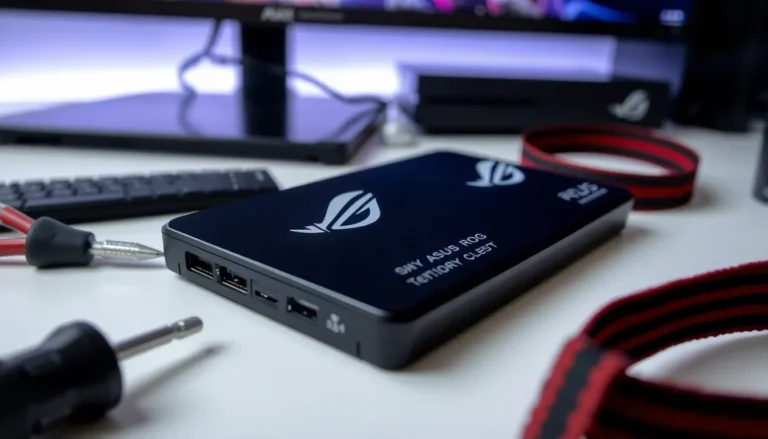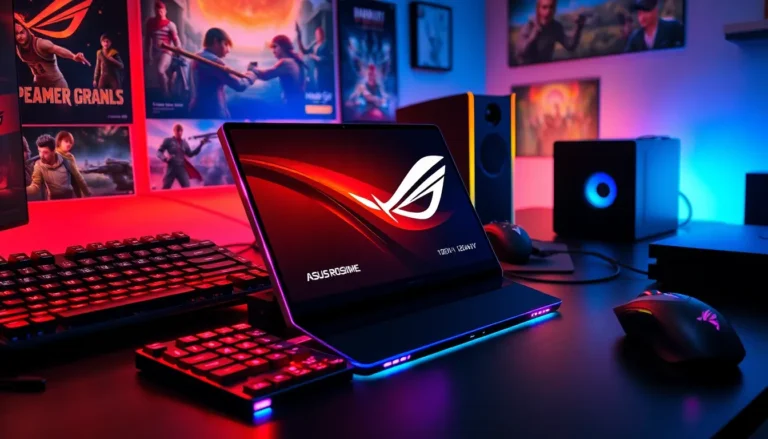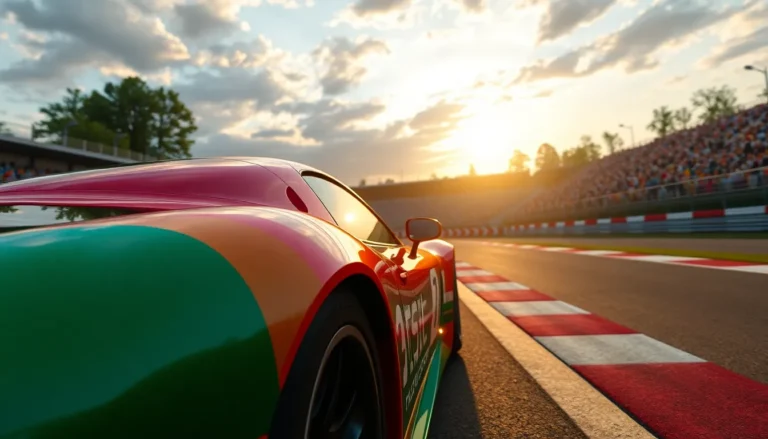Racing enthusiasts and gamers alike have been revving their engines in anticipation of Gran Turismo Sport. This isn’t just another racing game; it’s a high-octane experience that promises to put players behind the wheel of some of the world’s most coveted cars. With stunning graphics and realistic gameplay, it’s the kind of game that makes you want to strap in and take a victory lap around your living room.
But when can players finally hit the track? The release date has been a hot topic, sparking debates that could rival those of racing legends. As excitement builds, fans are left wondering if they’ll soon be trading their couch for a cockpit. Buckle up as we dive into the details surrounding Gran Turismo Sport’s release date and what it means for the racing community.
Table of Contents
ToggleGran Turismo Sport Release Date Overview
Gran Turismo Sport released on October 17, 2017, in North America. The game launched simultaneously in Europe on the same date. Anticipation around the release grew significantly due to the franchise’s long history of success. Gamers eagerly awaited the opportunity to experience cutting-edge graphics and refined gameplay.
Initial discussions focused on the potential release date announced during various gaming events. Promotional activities showcased the game’s impressive features, generating buzz among racing enthusiasts. Players praised the attention to detail in car models and tracks.
Updates continued after the initial release, with significant content additions to sustain player engagement. The inclusion of new vehicles, tracks, and features helped maintain community interest. Events and online championships encouraged competitive play and interaction among fans.
Post-launch support included regular updates aimed at enhancing player experience. Developers actively engaged with the community, listening to feedback and making necessary adjustments. Attention to detail ensured Gran Turismo Sport stayed relevant in an evolving gaming landscape.
Overall, the release date marked a pivotal moment for both the franchise and its community. Excitement surrounding Gran Turismo Sport demonstrated the enduring appeal of racing games in the gaming industry.
Historical Context of Gran Turismo Series
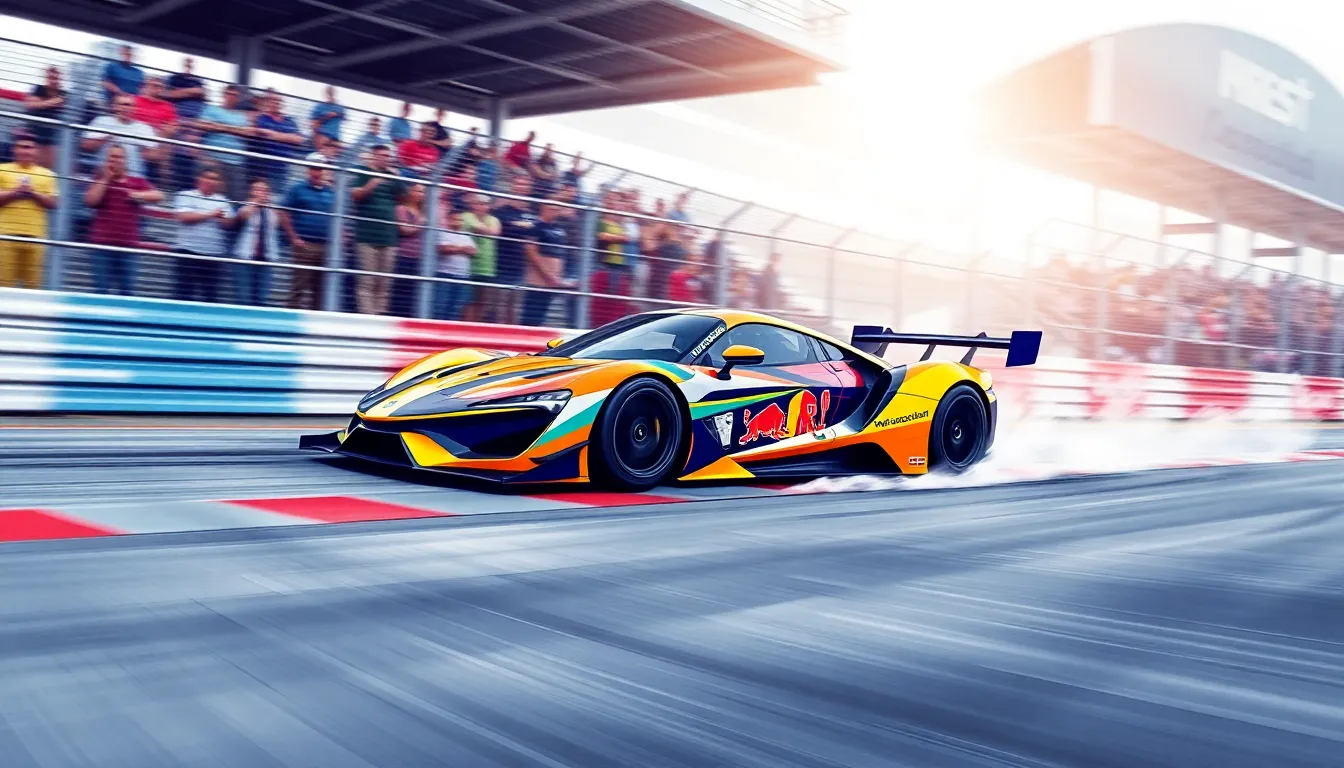
The Gran Turismo series has significantly shaped the racing game genre since its inception. Established in 1997, Gran Turismo introduced realistic driving mechanics and a diverse roster of vehicles.
Previous Releases and Their Impact
Gran Turismo 1 set a new standard for simulation racing with over 140 cars and 11 tracks. This release paved the way for future installments, focusing on realism and attention to detail. Gran Turismo 4 expanded the catalog, featuring 700 cars and over 50 tracks, enhancing player engagement. Each sequel consistently raised player expectations, with Gran Turismo 5 introducing online features that expanded its competitive landscape. These earlier titles built a loyal fan base, fostering an enduring community passionate about racing games.
Anticipation for Gran Turismo Sport
Anticipation for Gran Turismo Sport soared due to the franchise’s strong legacy. Gamers eagerly anticipated the 2017 release, expecting cutting-edge graphics and enhanced online capabilities. Developers teased features like real-world car brands and tracks during gaming expos, generating excitement. Community engagement played a crucial role, as fans speculated about potential updates and improvements. The extensive promotional campaigns highlighted the series’ commitment to realism, further fueling anticipation among players eager for new experiences.
Announcement and Delay Factors
Gran Turismo Sport garnered significant excitement around its release, which ultimately shaped the game’s narrative. Players eagerly awaited more information as details emerged about the official launch.
Initial Announcement Date
The initial announcement for Gran Turismo Sport took place during the PlayStation Experience event in December 2015. This revelation set a foundation for anticipation, as many racing enthusiasts looked forward to a new chapter in the franchise. After several teasers and promotional trailers, the developers confirmed the release date of October 17, 2017. The chosen date aligned with key marketing strategies designed to captivate both longtime fans and newcomers to the series.
Reasons for Delays
Factors contributing to delays included extensive development needs and the desire for high-quality gameplay. Developers aimed to incorporate advanced graphics and gameplay mechanics that exceeded player expectations. Additionally, gathering feedback from the community helped refine features, though this extended the timeline. Focus on online multiplayer and esports capabilities further complicated scheduling as teams worked meticulously to create a seamless experience. Balancing these elements with robust content updates ensured Gran Turismo Sport would meet the franchise’s legacy while addressing players’ needs.
Features and Gameplay Changes
Gran Turismo Sport introduced several exciting features and gameplay changes, enhancing the racing experience for players.
New Game Modes Introduced
The game launched with new modes that transformed how players engage with racing. Sport Mode facilitates competitive online races, allowing drivers to compete in ranked events and earn ratings based on performance. Campaign Mode provides a structured progression, where players complete challenges to unlock cars and earn rewards. Additionally, the introduction of the Brand Central feature allows players to purchase vehicles directly from manufacturers, promoting brand loyalty and exploration. Custom races enable personalized experiences with varied settings and conditions, catering to different play styles. These modes generate higher engagement while keeping the competitive spirit alive.
Enhancements in Graphics and Physics
Graphical improvements significantly elevated the visual quality of Gran Turismo Sport. Enhanced textures and lighting effects create realistic environments, capturing the essence of real-world racing circuits. With advanced rendering techniques, car models reflect intricate details, making each vehicle stand out. Physics have also seen considerable refinements. Improved tire physics and realistic weight distribution contribute to more authentic handling and driving experiences. Dynamic weather effects adjust racing conditions, adding layers of challenge to competitions. These enhancements not only appeal visually but also deepen the immersion for players.
Community Reception and Reviews
Gran Turismo Sport garnered significant attention upon its release, capturing the interest of racing enthusiasts and gamers alike.
Initial Reactions
Early player responses highlighted the stunning graphics and realistic physics, drawing praise for the lifelike presentation of cars and tracks. Many fans expressed excitement over the revamped online features, which significantly enhanced multiplayer experiences. Players noted the seamless transitions between races, creating an engaging environment. High expectations surrounded the competitive elements, especially with the introduction of Sport Mode. Critics acknowledged the focus on esports, aligning the game with the growing popularity of competitive racing. Overall, positive feedback characterized the initial reception, reflecting the series’ strong legacy.
Long-term Player Views
As time progressed, long-term players emphasized the importance of regular updates for maintaining engagement. Continuous content additions, such as new cars and tracks, helped sustain interest within the community. Players appreciated the developers’ responsiveness to feedback, enhancing gameplay and improving user experience. Many expressed satisfaction with the title’s evolving nature, enjoying the competitive challenges in online races. Continued improvements in graphics and physics engaged both veterans and newcomers. Long-term reviews underscored the significance of community events, fostering a strong sense of camaraderie among participants.
Conclusion
Gran Turismo Sport’s release marked a significant milestone in the racing game genre. The blend of stunning graphics and realistic gameplay captured the attention of both new and veteran players. With its focus on community engagement and regular updates, the game has maintained a vibrant player base. The introduction of innovative features and competitive elements has solidified its place in the esports landscape. As the Gran Turismo franchise continues to evolve, it remains a testament to the enduring appeal of racing games, keeping players excited for what’s next.

